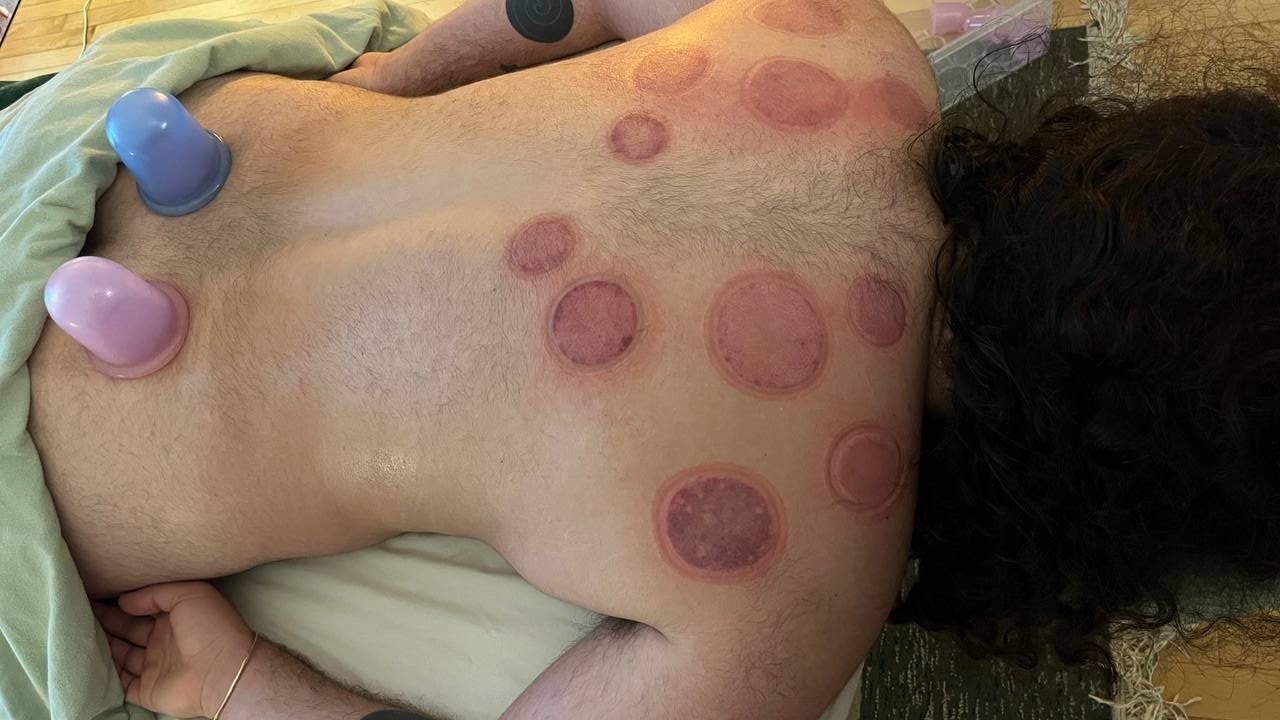What is cupping good for?
Cupping is a healing modality that has been practiced for centuries which has origins in Egypt and China. There are many different methods and schools of thought when it comes to cupping. The cupping I learned was using silicone cups and it’s focus is on releasing fascial and muscular tension. It is called myofascial cupping.
Myofascial cupping is a therapeutic technique that combines traditional cupping methods with modern practices to target muscle fascia and connective tissue. The process involves warming up the tissues with Swedish massage techniques, and then applying static cups to areas of tension, and also using gliding cups for added release. By using suction, the tissues are separated which allows fresh blood to flow in areas that were restricted. It is very effective for targeting deep, stubborn knots and fascia.
Passive movement of the targeted muscles while static cups are on is sometimes used to helps reach every fibre direction.
Cupping can leave marks which indicate certain things about the area they were placed, for example areas with a lot of tension leave dark marks due to the stagnant blood that is finally leaving those tissues. Good circulation, toxins, and lack of circulation can also be observed.
Some benefits of this technique are:
Improved Blood Flow: By drawing blood to the surface of the skin, myofascial cupping promotes circulation in the treated area. This helps deliver oxygen and nutrients to tissues while flushing out metabolic waste, speeding up the body’s natural healing process.
Relief from Muscle Tension and Pain: The suction effect targets muscle knots and tight fascia, helping to release built-up tension, reduce stiffness, and alleviate muscle soreness. It’s commonly used to treat chronic pain, neck tension, sports injuries, etc.
Enhanced Flexibility and Range of Motion: The release of tension in the muscles and fascia can improve joint mobility, making it easier to move freely and with less discomfort. This can benefit individuals who experience tightness or restrictions in movement.
Reduction of Inflammation: Cupping therapy can reduce inflammation by promoting blood flow and encouraging the body’s natural anti-inflammatory response, making it effective for treating conditions like arthritis or other inflammatory disorders.
Faster Recovery for Athletes: By reducing muscle soreness and improving circulation, myofascial cupping is a popular treatment among athletes. It aids in faster recovery after strenuous exercise, helping to prevent injuries and enhance performance.
Stress Relief: The relaxing effects of cupping therapy extend to the nervous system, helping to alleviate stress and promote relaxation. This can lead to an overall sense of well-being and mental clarity.
Detoxification: The increased circulation and removal of toxins from the body through myofascial cupping can help with detoxification, allowing the body to clear out impurities and improve overall health.
Cupping targeting SI joint, cupping marks from static cups left around shoulder blades for shoulder tension.

